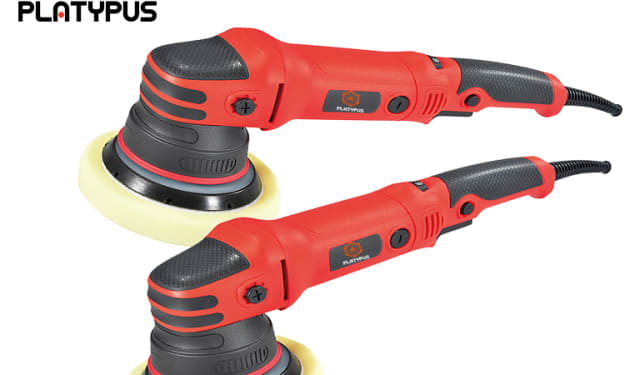Step-by-Step 1031 Exchange Checklist for Investors
Step-by-Step 1031 Exchange Checklist for Investors

A 1031 exchange, a powerful tool named after a section of the U.S. tax code, offers real estate investors a significant advantage: deferring capital gains taxes when selling an investment property. This means you can delay that tax bill by reinvesting the proceeds from the sale into a 'like-kind' property of equal or greater value within strict timeframes. This strategy can free up substantial capital to expand your portfolio and potentially generate higher returns, a prospect that should excite any savvy investor.
However, it's crucial to understand that a successful 1031 exchange requires meticulous planning and strict adherence to Internal Revenue Service (IRS) Regulations. Any misstep or missed deadline can disqualify you from tax deferral, potentially turning a promising opportunity into a significant tax burden.
To help you navigate this complexity, I will guide you through the crucial steps of a 1031 exchange, ensuring you maximize its benefits and stay compliant with the IRS.
What is a 1031 Exchange?
A 1031 exchange lets you sell an investment property and buy a similar one without paying capital gains tax. There are four main types of 1031 exchanges:
1. Delayed Exchange
This is the most common type of 1031 exchange. In a delayed exchange, the investor sells the relinquished property first and then gets 45 days to identify potential replacement properties and 180 days to close on a replacement property.
A qualified intermediary (QI) securely holds the sale proceeds from the relinquished property until the replacement property is identified and purchased.
2. Simultaneous Exchange
This is the least common type of 1031 exchange. In a simultaneous exchange, the investor and another party exchange properties directly at the same time.
This can be difficult to arrange because it requires finding another investor willing to exchange their property for yours on the same day. It also requires careful coordination and timing to ensure both parties are ready to complete the exchange simultaneously.
3. Reverse Exchange
A reverse exchange is similar to a delayed exchange, but in this strategy, the investor purchases the replacement property first and then sells the relinquished property. This can be helpful if the investor has already found a replacement property they don't want to miss out on.
However, reverse exchanges can be more complex and expensive than delayed exchanges.
4. Improvement Exchange
An improvement exchange allows an investor to use the sale proceeds from a relinquished property to improve an existing investment property. This can be a good option for investors wanting to upgrade their existing property or develop a new one.
Understanding Eligibility for a 1031 Exchange
The heart of a 1031 exchange revolves around the concept of "like-kind" properties. In simpler terms, the property you sell (relinquished property) must be similar to the one you buy (replacement property). Here's the good news: like-kind doesn't necessarily mean identical!
- Broader Horizons: A single-family home can be exchanged for an apartment complex, or commercial office space could be swapped for a warehouse. They can qualify as long as both properties are held for investment or business purposes.
- Focus on Real Estate: It's important to note that the Tax Cuts and Jobs Act of 2018 limited 1031 exchanges to real property. Previously, some investors could include things like machinery or equipment.
1031 Exchange in 4 Simple Steps
To ensure a smooth and successful 1031 exchange, follow this comprehensive step-by-step checklist:
Step 1: Gearing Up for the Exchange
Engage a Qualified Intermediary (QI)
Every successful exchange needs a facilitator—a Qualified Intermediary (QI). This neutral third party ensures a smooth transaction by securely holding the seller's funds until the exchange is complete. They also help with the necessary paperwork, ensure compliance with IRS regulations, and provide guidance throughout the process.
Finding the right QI is crucial. Look for experience in handling exchanges similar to yours. Don't hesitate to ask about their insurance coverage; it should adequately protect your assets in case of any unforeseen circumstances.
Gather Documentation
Before diving in, gather your documents like the seasoned investor you are. This documentation will be essential throughout the process. Here are some key items:
- Proof of Property Ownership: Deeds, titles, or any document establishing your ownership of the exchanged property.
- Tax Returns: Depending on the exchange type, recent tax returns might be required.
- Title Information: Obtain a current title report to ensure there are no outstanding liens or claims on the property.
Having these documents readily available will streamline the process and keep things moving smoothly.
Step 2: Selling Your Relinquished Property
Market the Property
The clock is ticking! In a 1031 exchange, you have strict deadlines to identify and acquire a replacement property. So, finding a buyer for your relinquished property quickly is crucial. Here are some strategies:
- Price competitively: Attract a wider pool of buyers by offering a fair market price.
- Highlight exchange-friendly features: Promote aspects that make your property attractive for investment (e.g., location, rental potential).
- Leverage your realtor's expertise: An experienced agent can market your property effectively and help you navigate tight timelines.
Include Cooperation Clause
To ensure a seamless exchange, include a cooperation clause in your purchase agreement with the buyer. This clause outlines the buyer's responsibilities in facilitating the exchange process. It typically includes provisions for timely transfer of funds, cooperation with the QI, and adherence to the exchange timeline. A well-drafted clause protects your interests and keeps the exchange on track.
For example, it might specify cooperation with your QI to ensure timely funds transfer. A well-drafted clause protects your interests and keeps the exchange on track.
Step 3: Identifying and Acquiring the Replacement Property
Understanding Time Constraints
A 1031 exchange demands precision. You have a 45-day window from the sale of your relinquished property to identify potential replacements. Take advantage of this crucial window, or your exchange could be disqualified! But don't feel pressured to rush into a decision. You have a full 180 days to acquire one of the identified properties.
Identification Procedures
Here's where IRS Form 8824 comes in. This form allows you to officially identify potential replacement properties. Remember, you must identify at least three properties that qualify as 'like-kind' to your relinquished property. This means they should be of similar nature, character, or class, even if they differ in quality or grade. The form also requires you to provide a detailed description of each property, including its address and fair market value.
The IRS offers some flexibility in how you approach this identification process. Here's a quick introduction to three popular methods:
- Three-Property Rule: Identify a maximum of three specific properties with no limit on their total value.
- 200% Rule: Identify an unlimited number of properties as long as their combined fair market value doesn't exceed 200% of the relinquished property's value.
- 95% Rule: Identify any number of properties, but you must acquire at least 95% of the total identified value within the 180-day window.
Making the Right Choice:
Identifying properties is just the first step. Now comes the crucial decision of selecting the best fit for your investment goals. Consider factors like:
- Alignment with your investment strategy: Does the property generate the income you need?
- Property type: Office building, apartment complex, or something else entirely?
- Location: Does it offer growth potential and align with market trends?
Don't skip due diligence! Thoroughly research each property before committing.
Finally, remember that the 180-day deadline looms large. To successfully complete the exchange, you must secure a purchase agreement for your chosen property within this timeframe.
Step 4: Completing the Exchange
QI Facilitation:
Remember your trusty Qualified Intermediary? They take center stage in this final phase. They'll securely hold the proceeds from the sale of your relinquished property.
Once you've finalized the purchase agreement for your replacement property, the QI uses those funds to acquire it on your behalf. This ensures you never have direct control of the sale proceeds, an essential requirement for a successful 1031 exchange.
Closing on the Replacement Property:
The closing process for your replacement property is similar to any real estate transaction. You'll work with your QI, closing agent, and other relevant parties to finalize the purchase.
Tax Reporting:
While you've successfully deferred capital gains taxes, you still need to report the 1031 exchange on IRS Form 8824. Attach it to your tax return to ensure everything is adequately documented.
Conclusion
A 1031 exchange offers a powerful tool for real estate investors. Following these steps, you can defer capital gains taxes and strategically reinvest your proceeds into a new property that aligns with your investment goals.
However, navigating a 1031 exchange requires strict adherence to timelines and a deep understanding of the property requirement. Consulting with tax and legal professionals is very important to ensure a smooth and successful exchange. Their expertise can help you avoid pitfalls, ensure compliance with regulations, and maximize your investment returns.
With the proper guidance, you can leverage the power of a 1031 exchange to conquer the real estate market – strategically, of course!
About the Creator
Sponsorcloud
SponsorCloud is the fastest-growing investment management platform, serving thousands of individuals around the globe. We focus on delivering solutions at a rapid rate of innovation.
Enjoyed the story? Support the Creator.
Subscribe for free to receive all their stories in your feed. You could also pledge your support or give them a one-off tip, letting them know you appreciate their work.






Comments
There are no comments for this story
Be the first to respond and start the conversation.